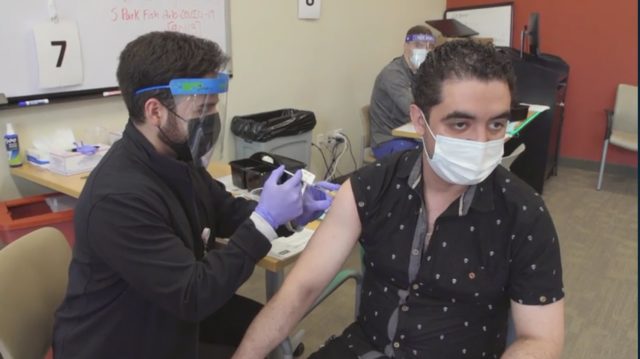It is unlikely we will be able to reach herd immunity against COVID-19 in Dane county until children are eligible to receive the vaccine, a UW Health doctor said.
According to experts, herd immunity could be achieved when 70 to 90 percent of the population is vaccinated against COVID-19. The senior medical director of primary care at UW Health, Dr. Matt Anderson said as of May 3, 45 percent of Dane County residents have completed their vaccine series and 60 percent have received at least one dose.
“This is great news, but we still need to get as many people vaccinated as possible. It is unlikely we will be able to reach herd immunity until children are eligible to receive the vaccine,” Anderson said.
Pfizer’s vaccine is expected to be approved for youth aged 12-15 as early as next week, though younger children will not be able to be vaccinated until at least September, experts say.
In an email conversation, Dr. Anderson also said while Dane County could reach something close to herd immunity, it isn’t an on/off switch for the pandemic. As long as surrounding communities and states are below that threshold for herd immunity, it could pose a risk of COVID-19 spreading among those who remain unvaccinated or in rarer cases, those who have received the vaccine.
Responding to a question via email about the percentage of employees who have not received vaccination, Shiva Bidar-Sielaff, vice president and chief diversity officer at UW Health, said all employees have been offered the vaccine and just under 90% of staff have now received it.
“A very small percentage of our employees have opted out. Employees must sign a declination form stating they do not wish receive the vaccine,” Bidar-Sielaff stated via email.
UW Health did not specify about the demographics of the people who have not received the Covid-19 doses. However, Shiva Bidar-Sielaff said since the beginning of vaccine availability UW Health has intentionally prioritized racial equity in vaccination efforts. For UW Health employees, they specifically created an algorithm that has received national attention. It prioritized which employees received vaccination first by using a calculation based on a combination of job-related risk exposure, age and social vulnerability index, which includes race and ethnicity as criteria.
According to some reports published in different national media outlets, vaccine hesitancy is highest in counties that are rural and have lower income levels and college graduation rates — the same characteristics found in counties that were more likely to have supported Mr. Trump. In wealthier Trump-supporting counties with higher college graduation rates, the vaccination gap is smaller, the analysis found, but the partisan gap holds even after accounting for income, race and age demographics, population density and a county’s infection and death rate.
When asked in polls about their vaccination plans, Republicans across the country have been far less likely than Democrats to say they plan to get shots. Most recently, Monmouth University and Quinnipiac University polls indicated that almost half of Republicans did not plan to pursue vaccinations. Only around one in 20 Democrats said the same. A recent poll showed that older Republicans were less resistant to becoming vaccinated than younger Republicans.
Bidar-Sielaff said vaccination is perhaps the best tool we have for mitigating this pandemic. There is more vaccine supply than demand, she said. Anyone can schedule a vaccine appointment at vaccinefinder.gov.




























